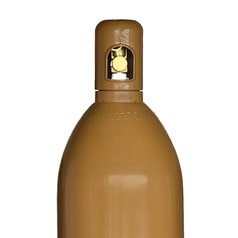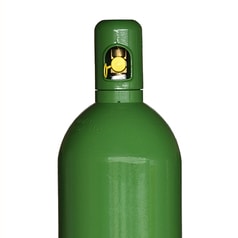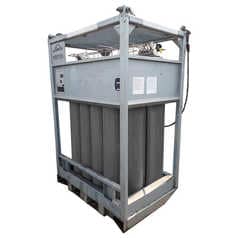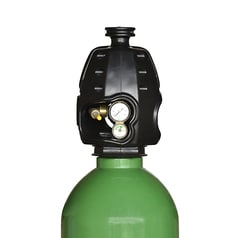Pour bénéficier d’un affichage optimal de la boutique en ligne de PanGas, vous avez besoin pour le navigateur de la version minimale suivante:
• Internet Explorer 9.0
• Mozilla Firefox 38
• Safari 8
• Chrome 45
Veuillez vous assurer que JavaScript est activé dans les paramètres de votre navigateur.
Wire arc based AM (DAD Direct Arc Deposition)
- Home
- Applications
- Additive Manufacturing (AM)
- Wire arc based AM (DAD - Direct Arc Deposition)
Modern techniques for the production of high-performance metal parts
The rise of the additive manufacturing industry has pushed the boundaries from welding as a pure joining process to generative manufacturing. To meet today's high demands, Linde offers a wide range of shielding gas solutions to maintain and refine material properties.
The next level of welding technology
This new process is based on both arc welding and plasma arc welding and uses wires as the starting material. These have been used for decades and are now adapted to the needs of additive manufacturing. Metal inert gas (MIG/MAG) and plasma welding techniques are used to melt the additive materials, which are used to build up 3D components layer by layer.
Benefits of additive manufacturing with arc and plasma welding technology
The advantages of additive manufacturing with arc and plasma welding technology are obvious: no complicated tools and equipment are required, making investment costs low, but the results absolutely convincing. Metal objects manufactured in this way impress with their structural integrity and dimensional accuracy. Since it is also possible to manufacture lightweight parts from expensive materials such as aluminum and titanium without material loss, which is considerable with machining techniques, additive manufacturing with arc and plasma welding technology is at the center of interest of many industries, especially for aerospace, automotive or medical. In terms of cost-effectiveness, this technology surpasses other additive manufacturing processes such as laser beam welding and electron beam welding.
As with standard MIG/MAG welding, metal wire is fed and melts in the arc to directly generate the layer-by-layer build-up on the substrate. Short arc processes with lower heat input are preferred because of the heat sensitivity of most materials used in additive manufacturing. Protective gases protect the melt and hot metal from the ambient air and thus from oxidation
Protective gases in additive manufacturing processes with arc and plasma welding technology
Air, hydrocarbons and moisture in the heat-affected zone lead to process instability and thus poor results. To prevent the chemical reaction that occurs when the heated metal comes into contact with elements such as oxygen and nitrogen, shielding gases are used to protect the electrode, the weld pool and the heat-affected zone from reacting with the ambient air and to prevent degradation from the chemical reaction. By using shielding gases, the metallurgical properties of the parts are maintained or, in some cases, improved.
Proven MIG/MAG welding gases help improve mechanical properties
Argon, helium and mixtures thereof are the process gases of choice in additive manufacturing with MIG/MAG and plasma welding techniques. Active components such as CO2, O2, N2 or H2 can be added to fine tune material properties. With years of expertise in all welding, cutting, heating and coating applications, Linde can support you in selecting the right gases and mixtures for your specific additive manufacturing project in welding technology. With our CORGON®, CRONIGON® and VARIGON® product families, we offer a full range of proven MIG/MAG shielding gases. Our mixtures are specifically designed to give you all the benefits of continuity, speed and freedom of form, combined with the reliability of automated welding processes and the flexibility and control of manual welding processes.
Recent research proves: additional cooling gas improves grain structure and size
In collaboration with a research team from the Institute of Production Engineering at the Technical University of Ilmenau (Germany), a new cooling strategy was tested in the context of additive manufacturing to prevent exposure to high heat in the upper layers of the workpiece. Experimental tests were conducted with argon, hydrogen and nitrogen, showing a significant influence of the cooling gas on the temperature during the MSG process in additive manufacturing. The best results were obtained with nitrogen and hydrogen, which provided a highly effective cooling process. Thus, grain structure and grain size can be modeled into a homogeneous microstructure using the gas composition.
Benefit from Linde's technical expertise and industrial experience
Since application conditions such as temperature and protective atmosphere are critical to coating quality, our application experts can advise you on the choice of shielding gas, the required flow rate of the shielding gas and other operating parameters best suited to your needs. In addition, you will receive support in the management of installations and gases. We are happy to support you in optimizing all gas-related processes. We also offer safety training and preventive maintenance.
Linde solutions for arc processes at a glance:
- Argon and helium gas supply - design, supply and installation
- Active gas supply - ready-made gas mixtures or ensuring process requirements are met on site
- Plasma gases - required for plasma generation
- On-site support - process and/or technical support
- On-stream gas system - design and maintenance services
- Gas safety - equipment, safety testing and training





